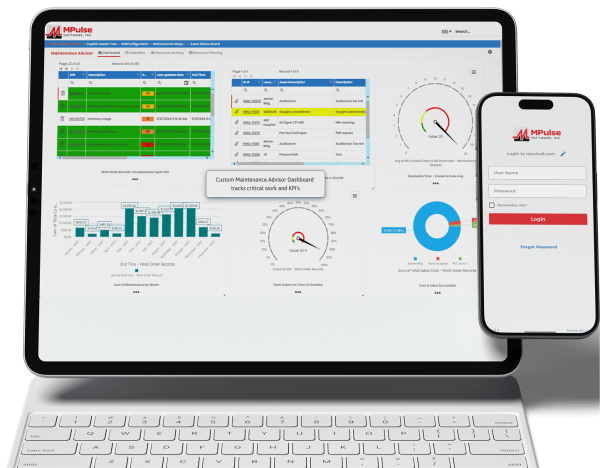With role-based access control, you can easily adjust settings in your MPulse implementation so the right people have the right access to the right records.
So, you can give your employees access to what they need—and only what they need.
Table of Contents
What is Role-Based Access Control?
Role-based access control puts record-level control in your hands. So, your maintenance personnel will only see the records relevant to their unique workloads.
For example, one MPulse customer employs a variety of maintenance professionals with very specific job duties. With role-based access control, their plumbers only see plumbing work orders. Their electricians only see electrical work orders.
Another customer with multiple facilities set up their role-based access control based on location. So the maintenance team at their Phoenix facility only sees work orders for that location, while the Denver facility team only sees the work orders for their location.
Role-Based Access Control Best Practices
Study after study shows that software that’s easier to use is used more often—and more effectively. Removing the “clutter” will significantly streamline data access for your teams.
Using role-based best practices also can help your organization comply with legal or ethical requirements. Here’s how to implement role-based access control…
- Limit which records your employees see depending on their role in the organization
- Restrict sensitive information
- Filter according to departments, work order types, locations, or other fields
- Assign roles so people see the only their operating unit’s information
- Choose which data are global, and which are unique to a group
- Define an unlimited number of custom filters
- Automatically link data to a user’s area of expertise
Advantages and Disadvantages of Role Based Access Control
The biggest advantage of role-based access control is centralized control and enhanced security. As a result, with role-based access control in CMMS software, you’ll…
- Reduce errors in data entry
- Prevent unauthorized users from viewing or editing data
- Gain tighter control over data access
- Eliminate the “data clutter” of unnecessary information
- Keep your teams running smoothly
While some maintenance teams may feel uncertain about setting up role-based access control in CMMS software, MPulse makes it easy with our easy-to-use interface. Or, our affordable training and implementation services can get you up and running with role-based access control quickly.
Available in MPulse Advanced and Enterprise editions, role-based access control delivers the right level of access to your company’s valuable information. Contact us for more information.






